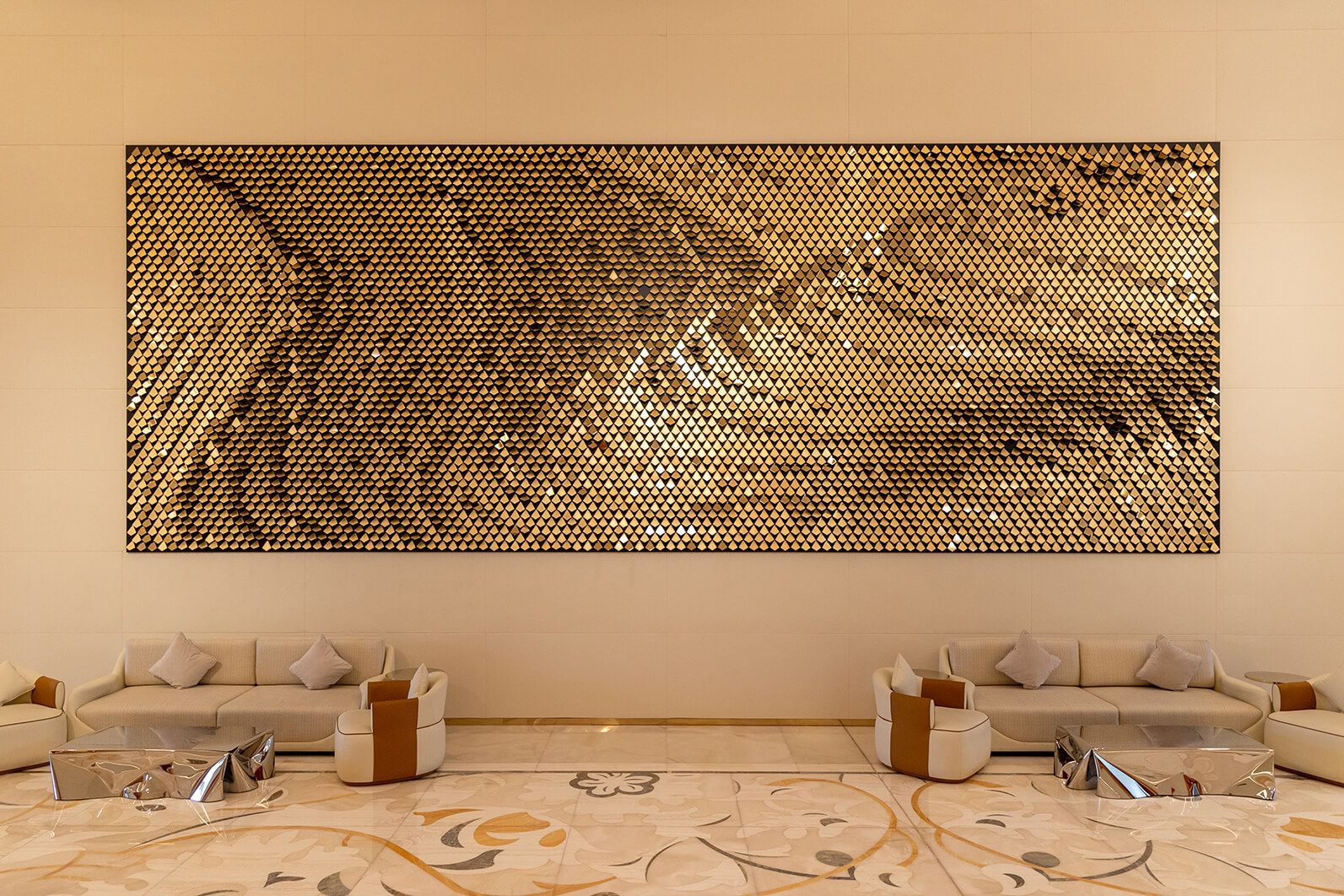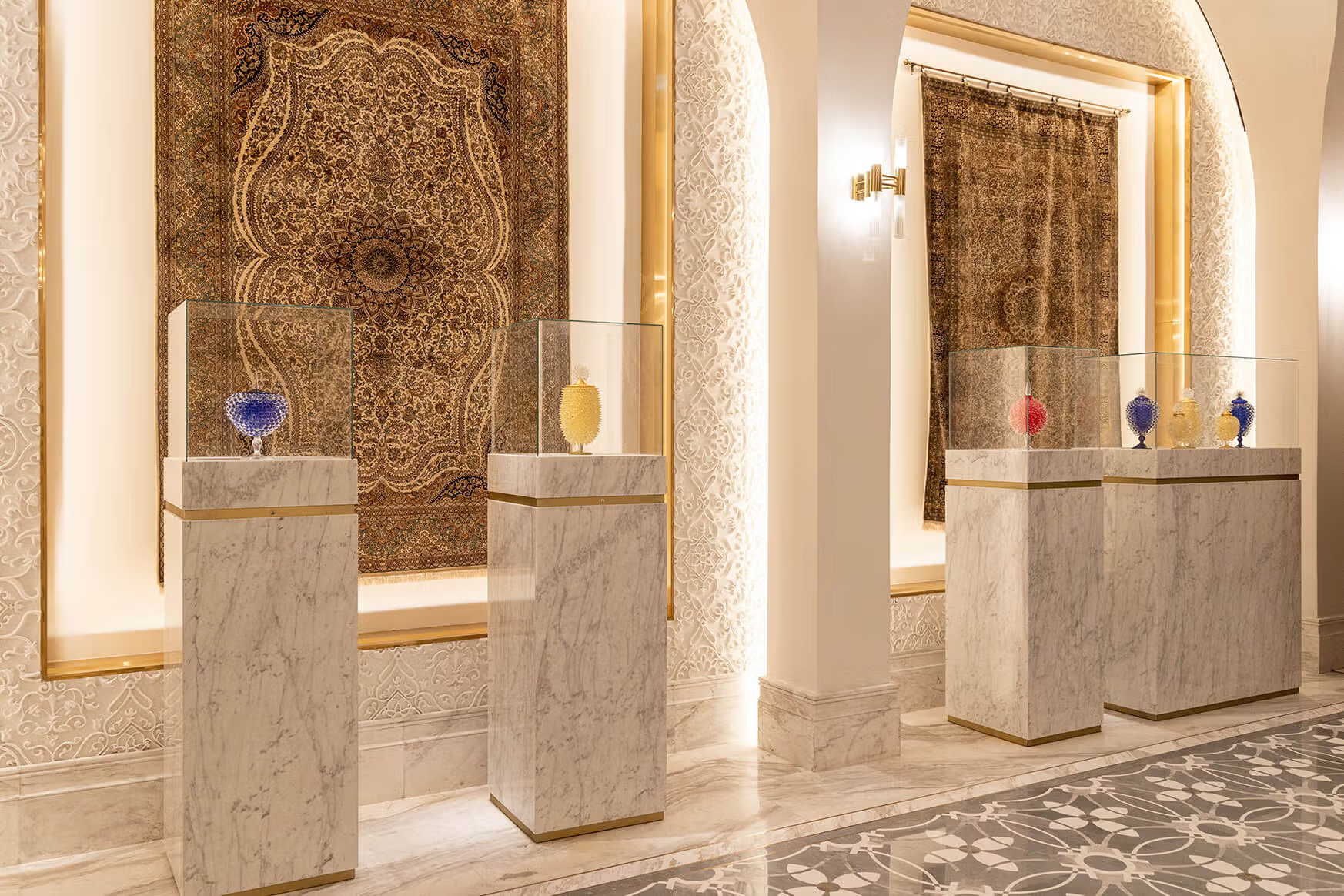Studio Visit | Kati Jünger

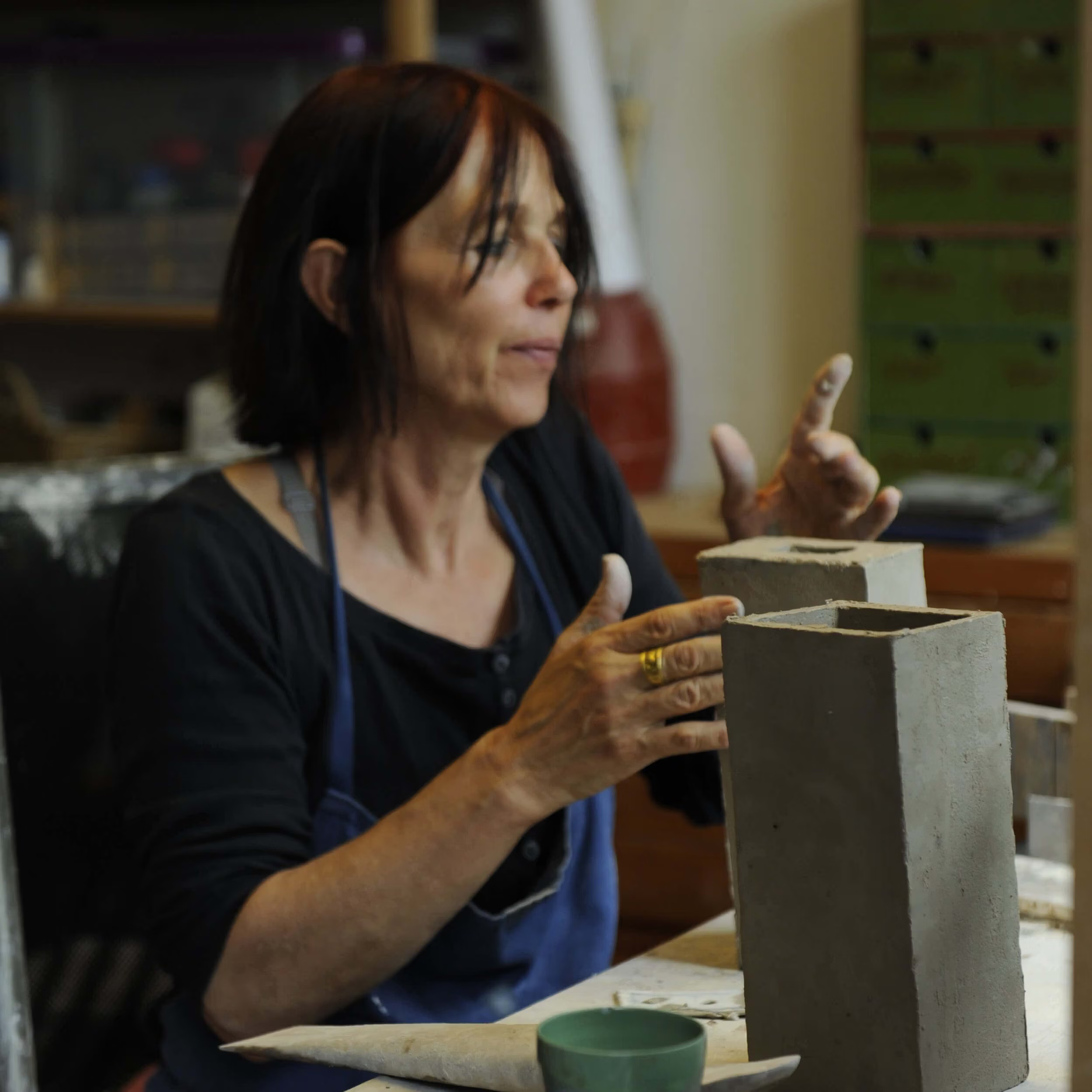
Kati Jünger is a master artisan who redefines the boundaries of ceramics, seamlessly merging tradition with innovation. Rooted in the timeless aesthetics of ancient pottery, her work explores the transience of life and the enduring power of heritage through thoughtful replication and reimagination. For Kati, each vessel is more than a functional object; it’s a narrative, an exploration of materials, and a testament to the art of craftsmanship.
When ArtLink commissioned Kati to create 64 bespoke teapots for the tea lounge at the Katara Towers Fairmont hotel, it was the perfect opportunity to bring her vision to life on a grand scale. We visited Kati in her studio to uncover the stories behind her work and this remarkable project.
Journey to Ceramics
For Kati Jünger, craft was less a choice and more a calling. Growing up in a family of artists, with a father who was a goldsmith, she was immersed in creativity from the start. "The sense of aesthetics was fed to me in my cradle," she says. At 16, she discovered ceramics and knew instantly it was her path.
“My father was a Goldsmith. He made jewelry. I grew up with art and I never asked myself what I should do when I grow up. I started making ceramics when I was 16 and that was it.”
Kati Jünger • Artist
Over the years, Kati honed her craft through an apprenticeship with Celine von Eichborn and studies at renowned institutions in Amsterdam and Vienna. Along the way, her work earned accolades and found homes in some of Europe’s most prestigious museums. But for Kati, it’s not about the awards or the recognition; it’s about the journey—exploring form, tradition, and the stories that vessels can tell.
Creative Process from Concept to Finish
Kati Jünger’s work is a reflection of her desire to slow down and engage deeply with the process of creation. Early in her career she already felt that simply turning a piece from start to finish was not satisfying. Instead, she sought to spend more time on each piece, turning to incorporating intricate ornamentation to make this possible.
Her creative days begin with a walk by the river or through the forest with her dog, a ritual that fuels her imagination. “The beauty, grandeur, and tranquility in nature inspire me and influence the directions I take with my works,” she shares.
Kati sources her clay from a local village store, kneading it until it warms in her hands. From there, she carefully considers the shape of the teapot or vase she’s about to create. Whether turning it on the potter’s wheel or building it from clay plates, her imagination guides the process, informed by the aesthetics of antique Asian pottery and decades of practice.
Her pursuit of innovation doesn’t stop at ornate form—Kati has long been fascinated by blending new materials with ceramics. Drawing on her family’s goldsmithing background, she began exploring ways to incorporate metals into her works. “Changing a ceramic work so that it actually looks metallic has always been fun for me,” she explains. This unique interplay of materials adds a distinctive touch to her functional yet artful vessels.
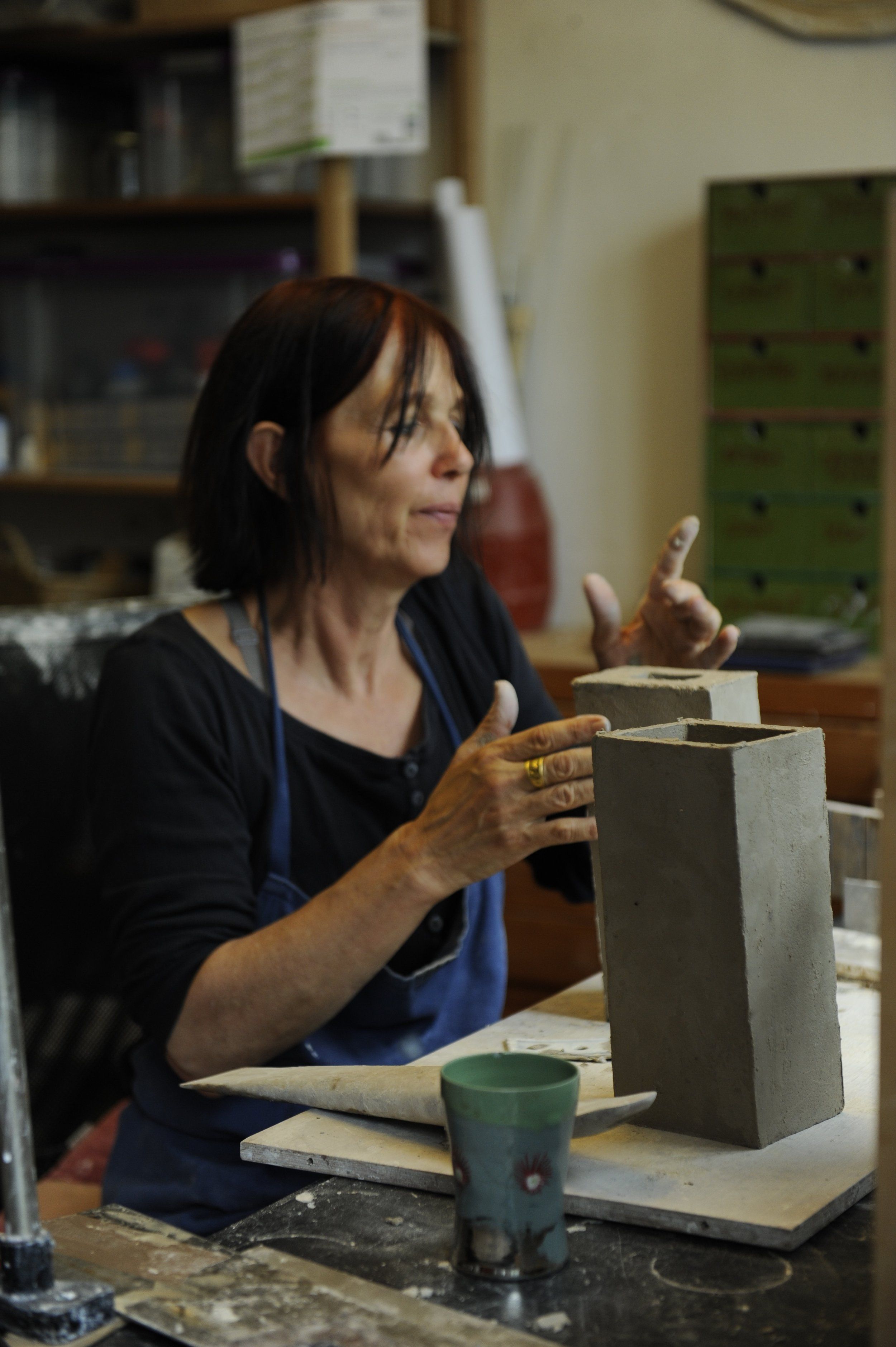
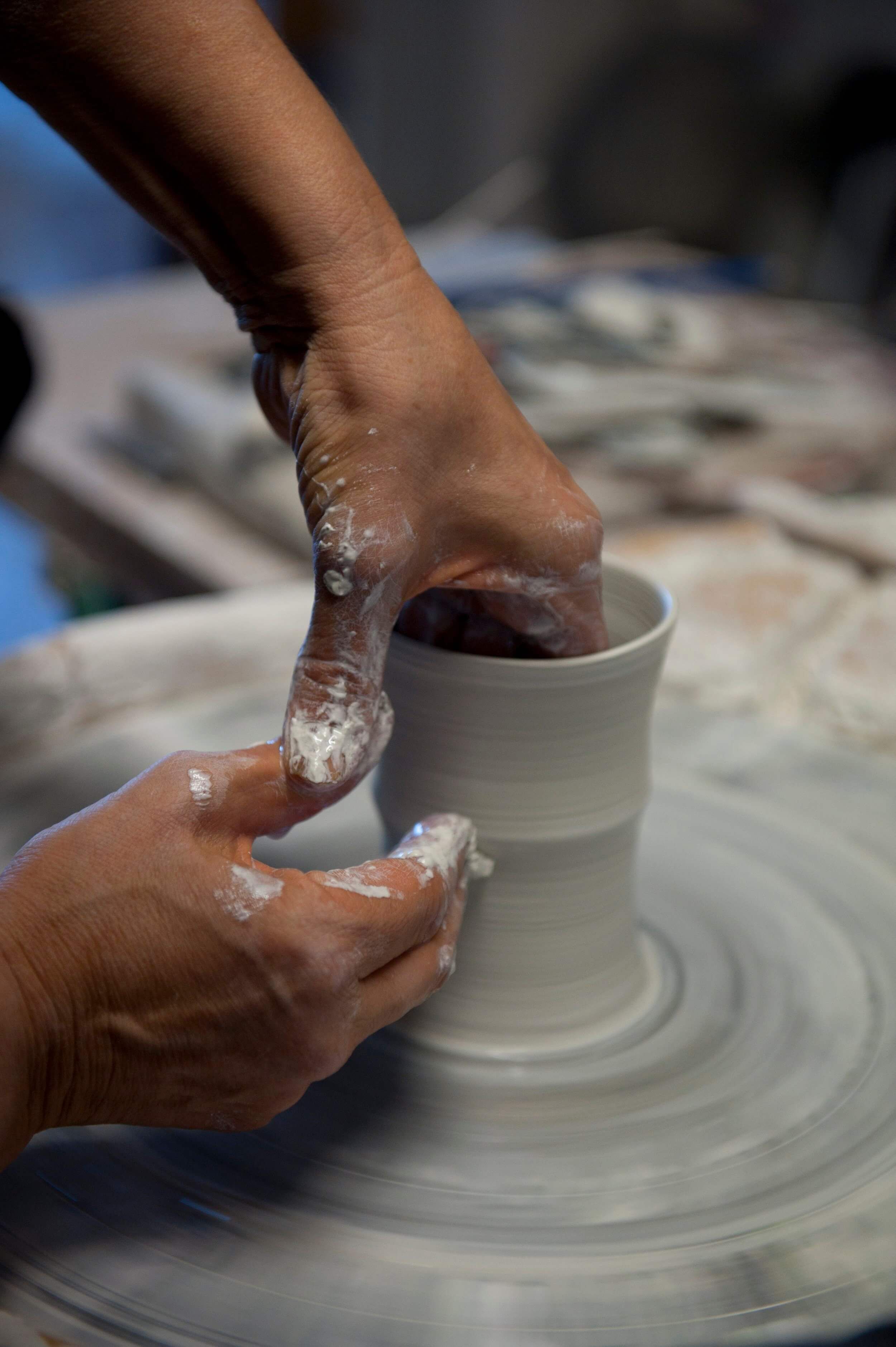
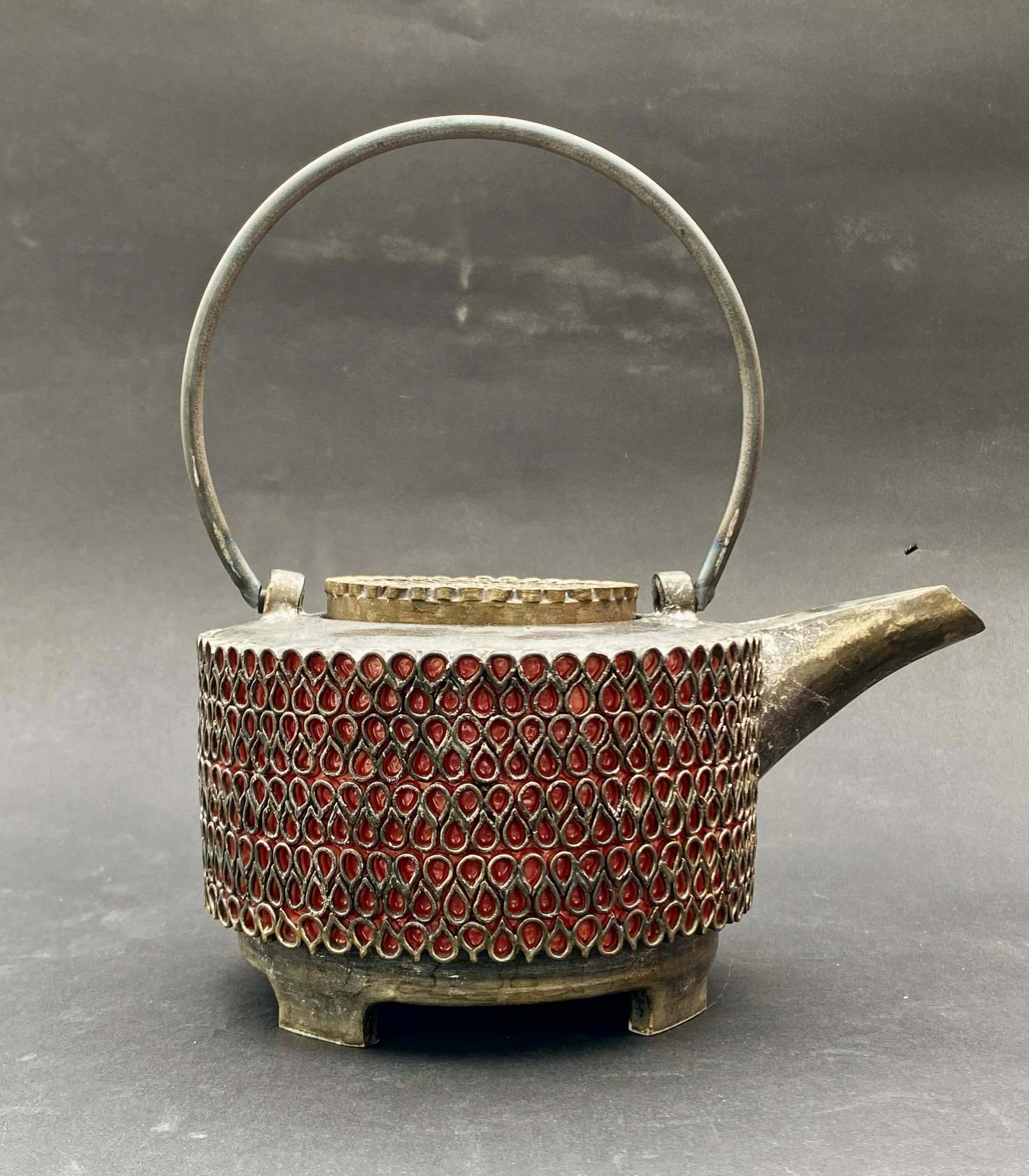

The ArtLink Commission
Kati typically works on one piece at a time, meticulously focusing on the smallest details to ensure each item is unique. However, the commission for 64 teapots posed a new challenge: completing the entire order within just three months to be delivered in time for installation.
“When we started, I was very nervous because I had never made a big order like this. The project was an exciting challenge for me,” Kati recalls.
Faced with the tight deadline, Kati turned to her local community for help. She enlisted the help of three friends from her village, transforming her workshop into a small manufactory to bring the ambitious project to life.
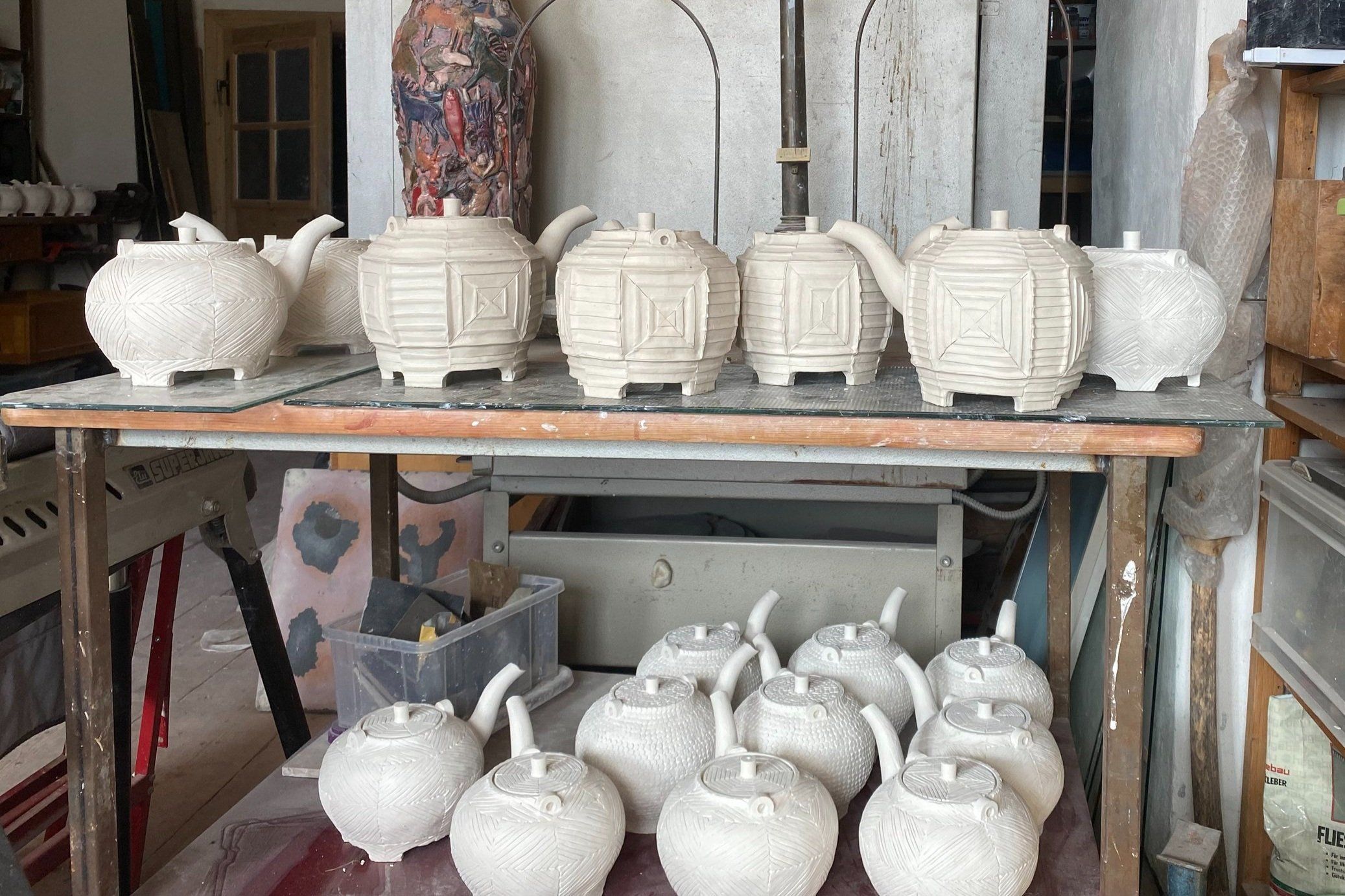
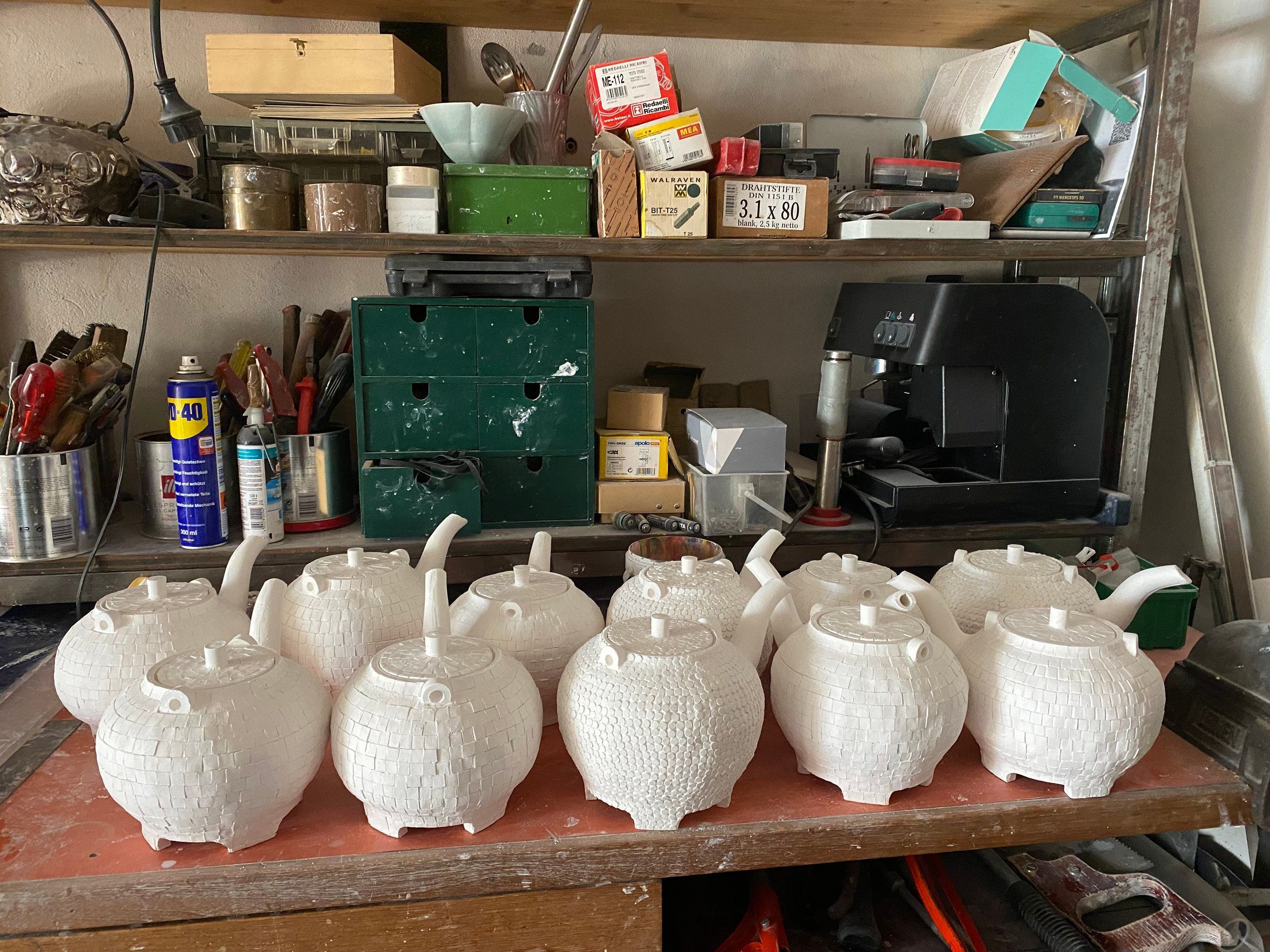
The Wall of Teapots Collection
Now installed in the Fairmont Doha tea lounge, this collection celebrates the harmonious intersection of ceramics and the art of tea infusion. Commissioned to honor Qatar’s culture of generous hospitality, the teapots serve as a modern homage to the communal tea ceremony—a cornerstone of social gatherings that fosters connections and conversations among friends and strangers alike.
Kati Jünger’s dedication to blending tradition with innovation is evident in every piece. Her work captures the enduring power of craft, the symbolism behind the vessel, and the shared human experiences they represent. This installation not only enhances the tea lounge but also resonates with the global travelers who frequent the cosmopolitan Fairmont Doha, connecting them through the timeless ritual of tea.
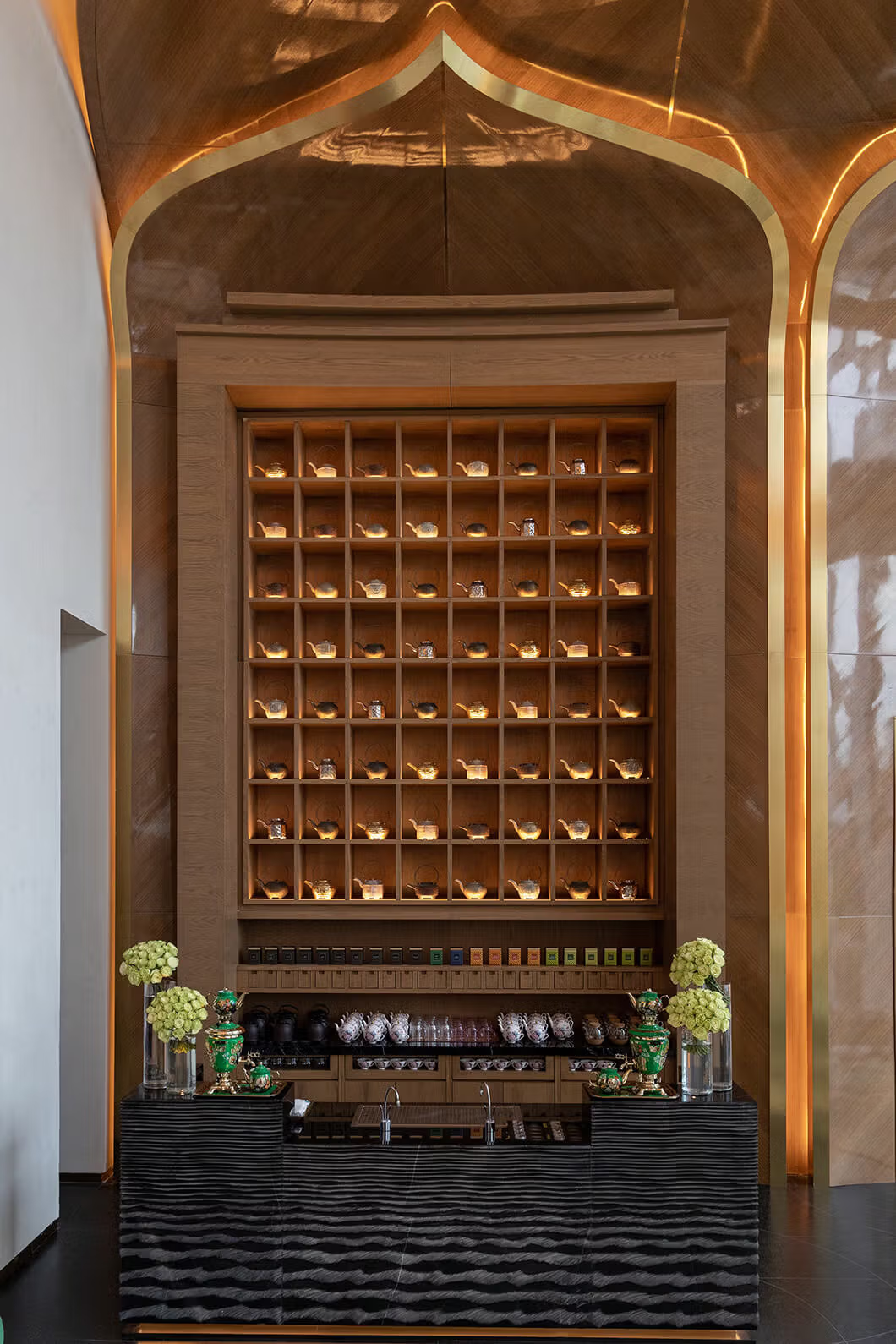
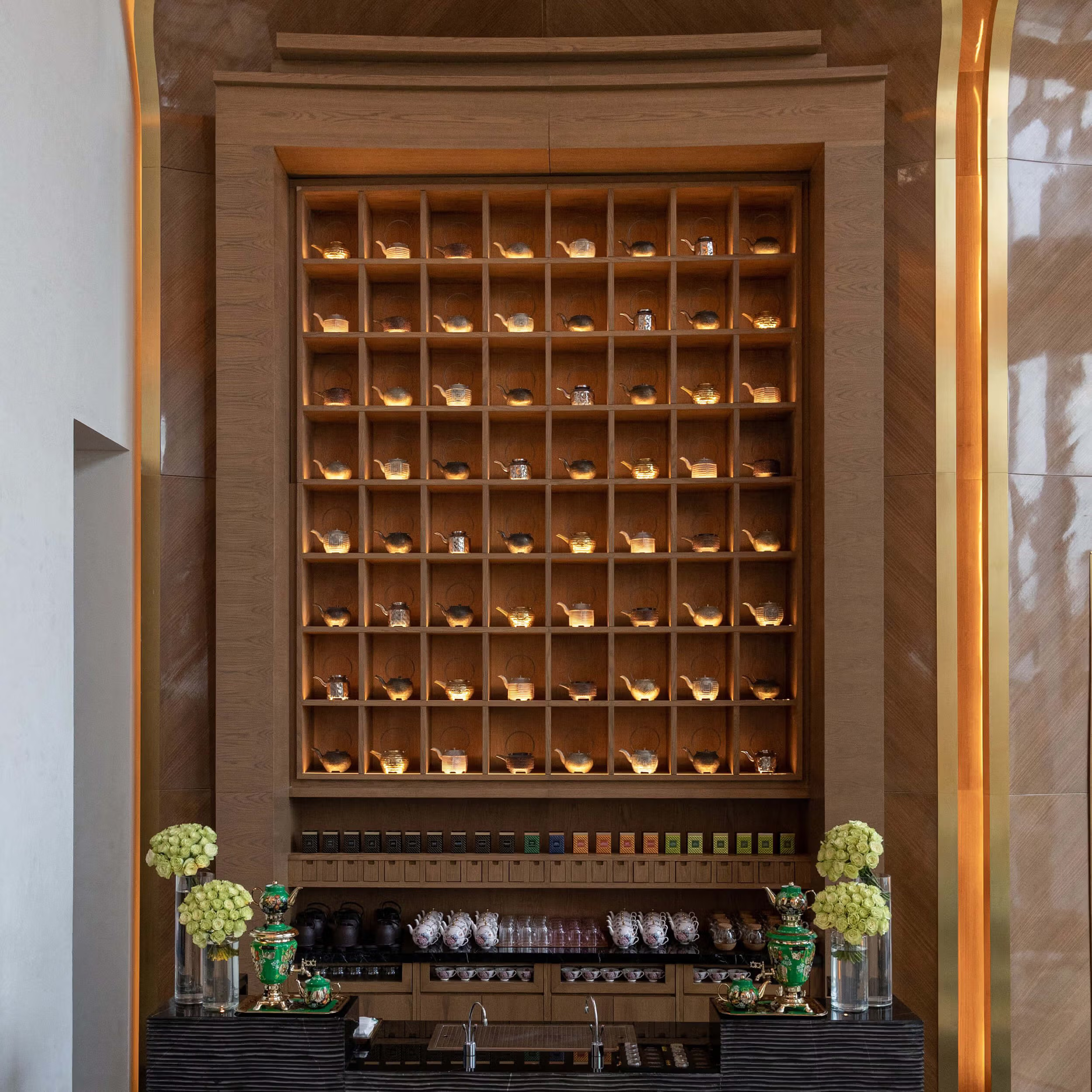

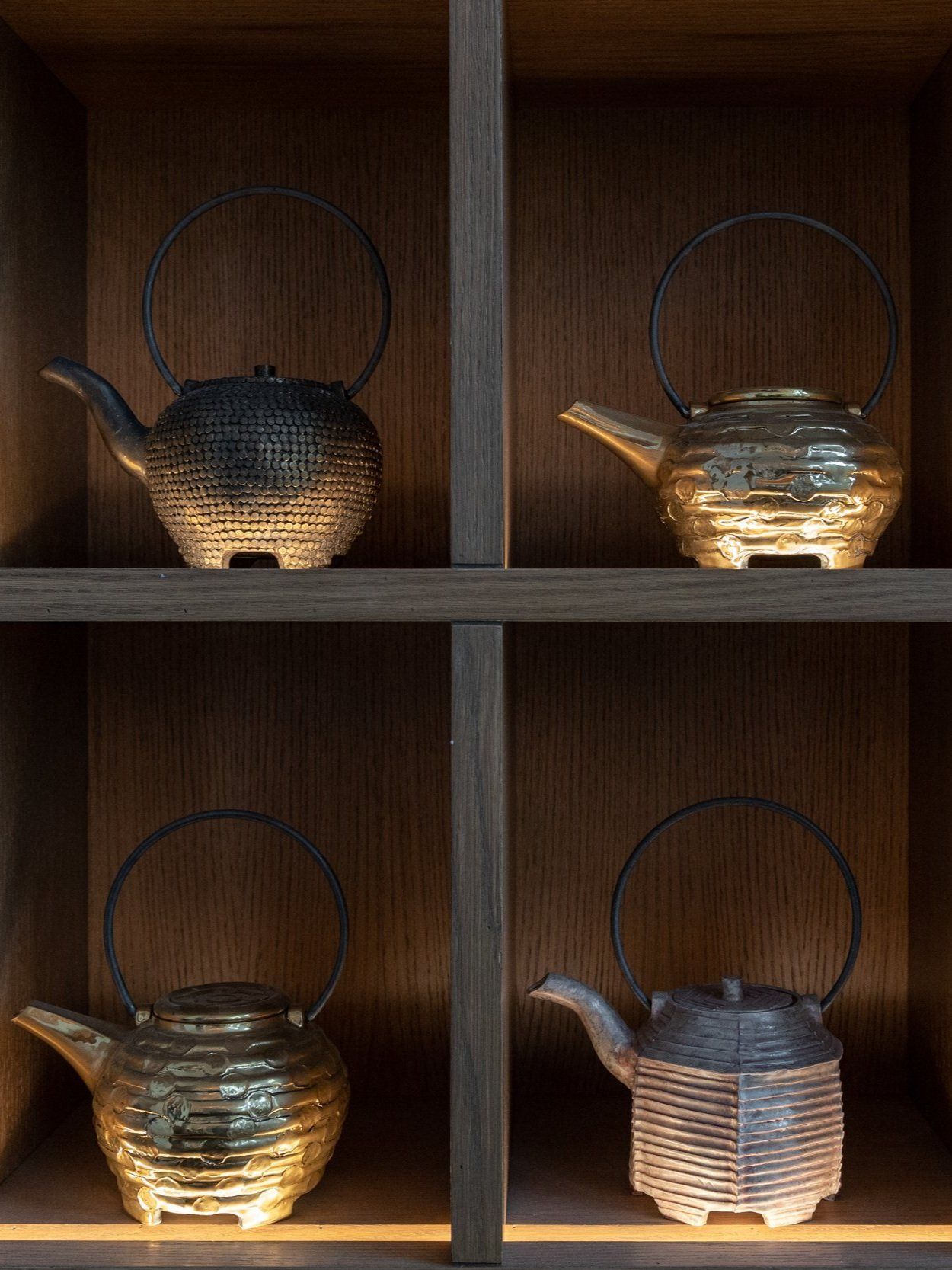
Watch the Documentary Film
ArtLink created a documentary film that goes behind the scenes with Kati Jünger and other artists commissioned for the Katara Towers art collection, capturing the making of their works and the stories behind them.

